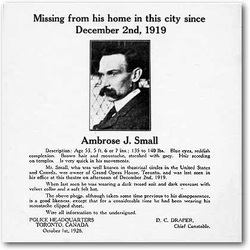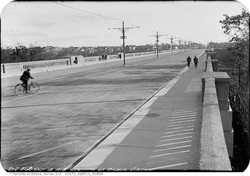I had been dreading this English course for way too long, and for what? The fear mostly came from the shadows of those dull high school English classes. "Please define 'iambic pentameter.'" Okay, so why do I need to know that? Those long hours were not even remotely close to eliciting any spark of interest or relating anything I know in the real world but yet haunted by the pressure of impossibly doing well.
I did have fears that this course was going to be a repetition of those, but am most thankful that it was not. My whole perspective of literature, not just literature of Canada, changed. I've always enjoyed reading and am so happy to know that the study of writing can be something that I can relate to. I am most thankful for Erika who gave us so much liberty in choosing what we want to read, what we want to discuss, and what forms we want to take in our discussions. While some of my classmates may find it disorienting, I can only say it's a rare gift in most university courses.
For the most part of our class discussions, I very much agree with what people were trying to say, although the topic of identity remains in a private and personal domain for me. I don't feel a need to define my own identity (at least not according to political boundaries) and would not like others to do that for me. So at times I feel really reluctant to give our national identity (which includes you, me, and us) a definition.
For a person who has almost no prior knowledge of CanLit, I feel we owe some earnest discussions of Northrop Frye, Margaret Atwood, and others of the "canon." Those authors were only brushed by in the context of crumbling old power houses. Time has moved on, that's not us anymore.
Maybe that's right, but I still don't know why those authors were the canon except they were middle-class Anglo-Saxons. Did our Rosemarys and Johns really felt that those literature represented them as Canadians at those times? Did they feel like victims or survivors? Why would they feel that way? How is that so different today?
I like the literature in Canada as it is today, and I'm really glad I was reading Green Grass Running Water instead of the prairies. However, I think without those canon the literature in Canada would not have been the same today. I think we owe them some acknowledgment. The question of identity is also a fluid thing. 30 years down the road I bet being Canadian will mean something very differently from today. I think it's more important to understand what forces were behind shaping these identities than
I did have fears that this course was going to be a repetition of those, but am most thankful that it was not. My whole perspective of literature, not just literature of Canada, changed. I've always enjoyed reading and am so happy to know that the study of writing can be something that I can relate to. I am most thankful for Erika who gave us so much liberty in choosing what we want to read, what we want to discuss, and what forms we want to take in our discussions. While some of my classmates may find it disorienting, I can only say it's a rare gift in most university courses.
For the most part of our class discussions, I very much agree with what people were trying to say, although the topic of identity remains in a private and personal domain for me. I don't feel a need to define my own identity (at least not according to political boundaries) and would not like others to do that for me. So at times I feel really reluctant to give our national identity (which includes you, me, and us) a definition.
For a person who has almost no prior knowledge of CanLit, I feel we owe some earnest discussions of Northrop Frye, Margaret Atwood, and others of the "canon." Those authors were only brushed by in the context of crumbling old power houses. Time has moved on, that's not us anymore.
Maybe that's right, but I still don't know why those authors were the canon except they were middle-class Anglo-Saxons. Did our Rosemarys and Johns really felt that those literature represented them as Canadians at those times? Did they feel like victims or survivors? Why would they feel that way? How is that so different today?
I like the literature in Canada as it is today, and I'm really glad I was reading Green Grass Running Water instead of the prairies. However, I think without those canon the literature in Canada would not have been the same today. I think we owe them some acknowledgment. The question of identity is also a fluid thing. 30 years down the road I bet being Canadian will mean something very differently from today. I think it's more important to understand what forces were behind shaping these identities than


 RSS Feed
RSS Feed